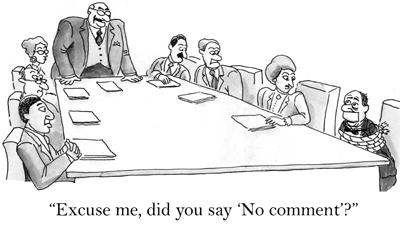 The internet age has allowed people to communicate like never before, from all over the world in the blink of an eye; people can interact with others from the safety of their own homes. The anonymity of internet communication has emboldened many to speak out – sometimes positively, sometimes negatively.
The internet age has allowed people to communicate like never before, from all over the world in the blink of an eye; people can interact with others from the safety of their own homes. The anonymity of internet communication has emboldened many to speak out – sometimes positively, sometimes negatively.
Comments on your blog can be both valuable for you, as the author, and for others who read your blog. Comments allow you to interact with your readers, and also learn information from them about their views on your services or your market. For readers, comments give them an additional point of interest, and encourage participation; and participation means more invested readers.
So why isn’t anyone commenting on your blog posts? There isn’t a single answer to this question, because there’s no surefire way to elicit comments. But there are some steps you can take to highly encourage them:
Tailoring content to your audience
Do you understand your audience? Do you have buyer personas? Understanding your audience is absolutely imperative when writing blog posts. You need to understand whom you want to go after (the buyer persona) and then tailor the content to what they are interested in. The more people care about your content, the more likely they are to comment on it.
Posting open-ended questions
Sometimes, people just don’t feel that a comment is warranted on a blog post. Maybe they thought it was well written, but don’t feel the need to comment just to say that. Including questions in your blog post, especially at the end of the post, is a direct signal to your readers that you want their feedback. By no means is it a guarantee that they will answer, but at least you are inviting them to participate in the discussion. Some readers will accept the invitation.
Stirring the pot
The only thing worse than a blog post that is full of errors is a blog post that is boring or feels like a waste of time. You need to provide something the reader views as valuable or at least thought provoking. Sometimes, that means “stirring the pot” or taking a controversial position to drum up interest.
That doesn’t mean you should go ahead and be shocking just for the sake of controversy, or even worse, offend your readers; instead, take a strong position on one side of a debatable issue in your market, but be sure to back it up with some facts.
For example, does your field involve the stock market? Write a blog post on why penny stocks are absolutely a sound investment. Back it up with some numbers, then invite those who disagree with you to counter in the comments.
Allow Facebook commenting
For many people, convenience dictates a lot of the decisions they make online. For example, have you ever looked at the runtime of a video and decided it was simply too long for you to watch? Taking four or five minutes of your time for an internet video seems like an inconvenience.
Facebook commenting may remove some of the anonymity from internet comments, but it does greatly increase the ease of use. Many people stay logged into Facebook constantly, or might have been led to your blog from Facebook. Allowing them to comment directly with their Facebook account removes additional clicks from the equation, making it easier for your readers to drop a comment.
To read more on blogging for business, download our free eBook:


Comments